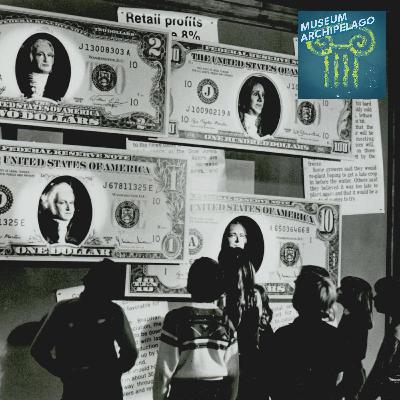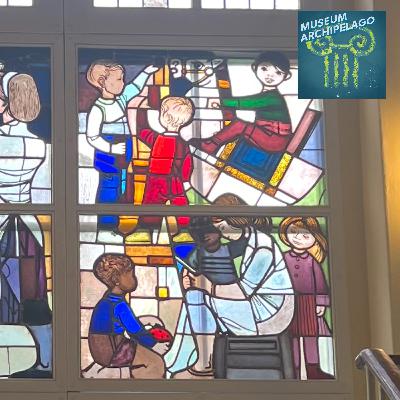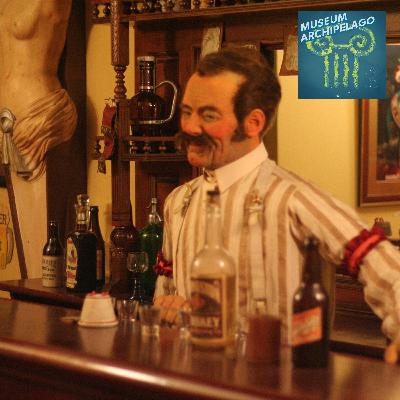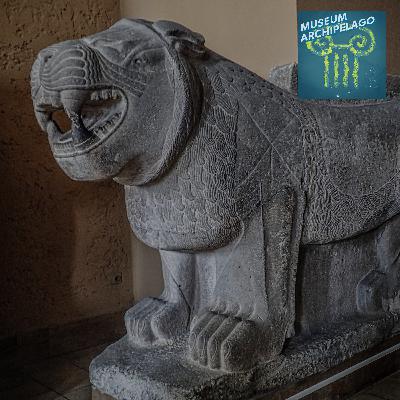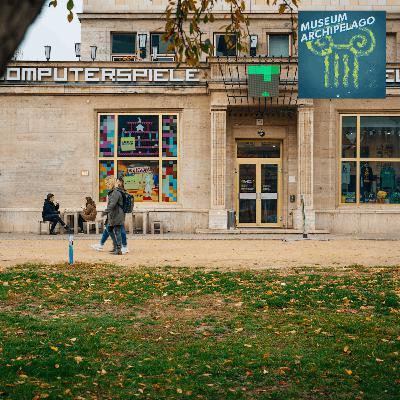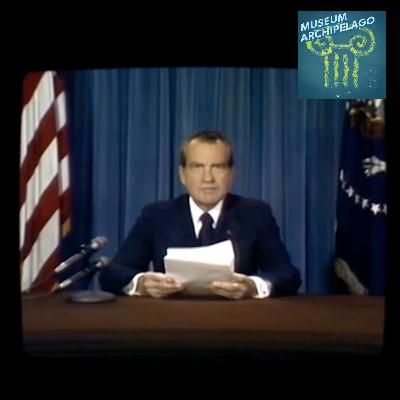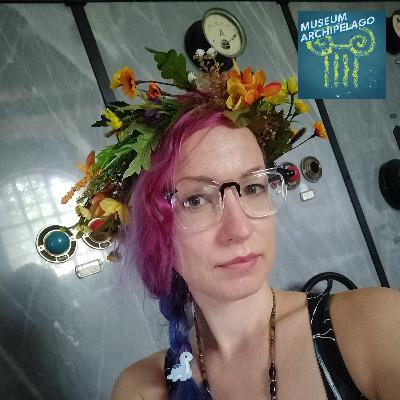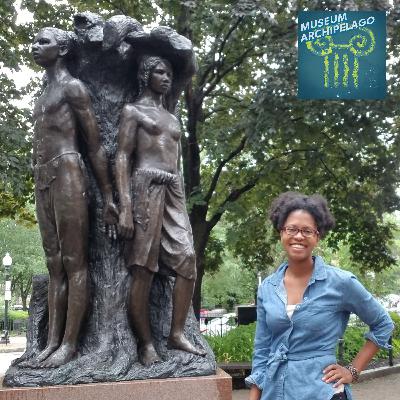103. How Computers Transformed Museums and Created A New Type of Professional
Description
Computing work keeps museums running, but it’s largely invisible. That is, unless something goes wrong. For Dr. Paul Marty, Professor in the School of Information at Florida State University and his colleague Kathy Jones, Program Director of the Museum Studies Program at the Harvard Extension School, shining a light on the behind-the-scenes activities of museum technology workers was one of the main reasons to start the Oral Histories of Museum Computing project.
The first museum technology conference was hosted in 1968 at the Metropolitan Museum of Art. This prescient event, titled “Conference on Computers and their Potential Application in Museums” was mostly focused on the cutting edge: better inventory management systems using computers instead of paper methods. However, it also foresaw the transformative impact of computers on museums—from digital artifacts to creating interactive exhibits to expanding audience reach beyond physical boundaries. Most of all, speakers understood that museum technologists would need to “join forces” with each other to learn and experiment better ways to use computers in museum settings.
The Oral Histories of Museum Computing project collects the stories of what happened since that first museum technology conference, identifying the key historical themes, trends, and people behind the machines behind the museums. In this episode, Paul Marty and Kathy Jones describe their experience as museum technology professionals, the importance of conferences like the Museum Computer Network, and the benefits of compiling and sharing these oral histories.
Topics and Notes
- 00:00 Intro
- 00:15 A Conference on Computers and their Potential Application in Museums
- 00:43 Thomas P. F. Hoving Closing Statements
- 01:41 Paul Marty, Professor in the School of Information at Florida State University
- 02:11 Kathy Jones, Program Director of the Museum Studies Program at the Harvard Extension School
- 02:18 Museum Computing from There to Here
- 04:08 The First Steps of Museum Computing
- 04:52 Early Challenges in Museum Databases Like GRIPHOS
- 07:00 Changing Field, Changing Profession
- 08:48 The Oral Histories of Museum Computing Project
- 11:32 Reflecting on the Journey of Museum Technology
- 14:12 Outro | Join Club Archipelago 🏖
Museum Archipelago is a tiny show guiding you through the rocky landscape of museums. Subscribe to the podcast via Apple Podcasts, Google Podcasts, Overcast, Spotify, or even email to never miss an episode.
Support Museum Archipelago🏖️
- Access to a private podcast that guides you further behind the scenes of museums. Hear interviews, observations, and reviews that don’t make it into the main show;
- Archipelago at the Movies 🎟️, a bonus bad-movie podcast exclusively featuring movies that take place at museums;
- Logo stickers, pins and other extras, mailed straight to your door;
- A warm feeling knowing you’re supporting the podcast.
Transcript
Below is a transcript of Museum Archipelago episode 103. For more information on the people and ideas in the episode, refer to the links above.
<input class="toggle" id="collapsible" type="checkbox" />
<label class="lbl-toggle" for="collapsible">View Transcript</label>
On April 17th, 1968, less than two weeks after Dr. Martin Luther King Jr. was assassinated in Memphis, the first computer museum conference was coming to a close at the Metropolitan Museum of Art in New York City.
This conference was hosted by the recently-formed Museum Computer Network, and had a hopeful, descriptive title: A Conference on Computers and their Potential Application in Museums.
At the closing dinner, Metropolitan Museum of Art Director Thomas P. F. Hoving acknowledged that “for some these three days have an unsettling effect” and that “these machines are going to put us on our toes as never before” but summarized, “the whole idea of a computer network is generating momentum, and is forcing upon museums the necessity of joining forces, pooling talents, individual resources, and strengths.”
Paul Marty: When I tell students that there is a group that has been meeting annually since 1968 to discuss problems related to the use of computers and museums, they find that hard to believe. That seems like a long time ago, and I guess it is a long time ago. But museums were always on the cutting edge of trying to figure out how to use this technology. Maybe not everybody was on board, but there was always somebody who was pushing that story forward.
This is Paul Marty, whose work focuses on the interactions that take place between people, information, and technology in museums.
Paul Marty: Hello, I'm Paul Marty, Professor in the School of Information at Florida State University.
Professor Marty, along with his colleague Kathy Jones, are collecting stories of the people behind the computers behind the museums as part of their Oral Histories of Museum Computing project. A selection of stories from the project will be published as a book.
Kathy Jones: Hello, my name is Kathy Jones, and I'm the Program Director of the Museum Studies Program at the Harvard Extension School.
The key question that both Jones and Marty want to answer is how did we go from there to here?
Paul Marty: How did we go from a world where curators were saying there will never be a computer screen in our galleries, to a world where when you're setting up a new exhibit the first thing you ask is where should we put the iPads? How do we go from a world where we will never share digital images of our collection on the internet to a world where there are hundreds of millions of open access images in the public domain on the internet by museums?
To answer that question, Jones and Marty looked to their own experiences going to the many museum computer conferences that came after. But they both underscore how remarkably prescient that first meeting proved to be.
Kathy Jones: That first Museum Computer Network meeting I just want to emphasize the importance of meetings, even that early and now of bringing new ideas to the field. everything evolved based on the technologies that we had at hand. And museums weren't the first to adopt something like a scanner or to do multimedia, but as soon as we saw the possibilities, we certainly began to do that.
Paul Marty: I actually just pulled up the table of contents for the conference proceedings for the very first Museum Computer Network Conference. And, there were a lot of papers in there sort of predicting what the future of computers in museums were going to be. And of course most of them were focused on inventory control and this. But there were also people talking about computer graphics and what that was like at the time. J. C. R. Licklider who is the the founder of ARPANET, which is , the original backbone of the internet, was there and spoke about the current state of computer graphics technology in the late 1960s, and , he was predicting a world where there would be digital images of museum artifacts, where people could have an interactive art museum where you would use digital computer images of artifacts. And it took a while for us to get there, but it's wonderful that people were thinking that far ahead in the 1960s.
Computers first entered museums as a form of inventory management. Edward F. Fry summarizes in his 1970 review of that first conference, “the rapid increase in the size of museum collections in the United States has in fact reached such a point in many instances that a more efficient means of cataloging than that of the standard index card file h




